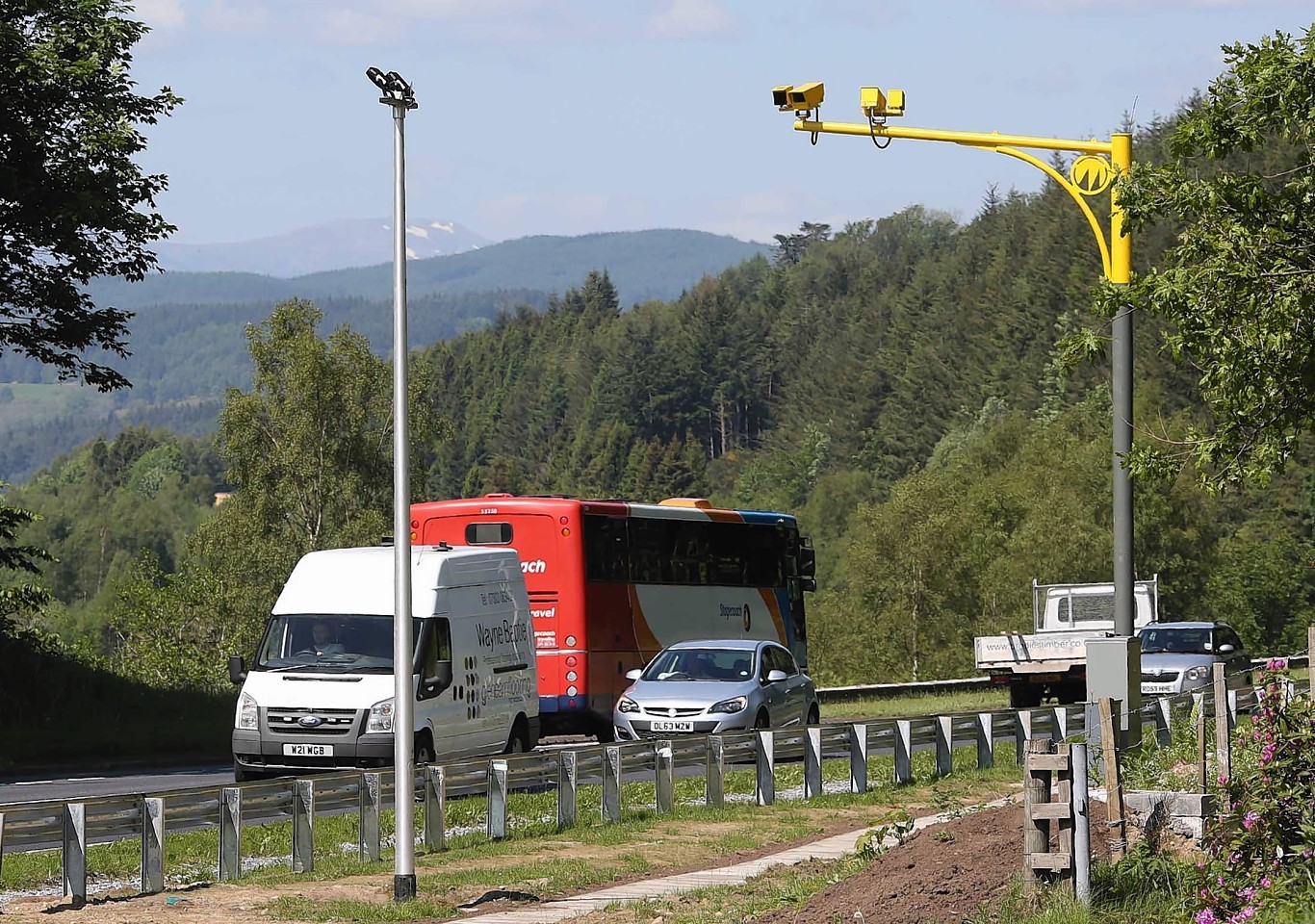Readers of the Press and Journal have overwhelmingly rejected the introduction of average speed cameras on the north’s most notorious road.
Almost 1,000 people voted in an online poll during our five-day series on the A9 Inverness-Perth route.
And by close of play yesterday, 90% of respondents said the so-called “yellow vultures” would not improve safety on the road.
The results emerged as more of the cameras were being installed in the north.
Devices have sprung up at sites at Tomatin, Moy and Slochd within the past week in preparation for the £3million Transport Scotland scheme going live in October.
Critics of the project welcomed the result of the poll, but the A9 Safety Group, which is behind the cameras, said its own research showed people backed their use.
A total of 973 people voted in the Press and Journal survey, with 879 saying no to the cameras.
Just 94 people said the devices would make the road safer.
Mike Burns, of the A9 Average Speed Cameras are not the Answer campaign group, said the findings backed up its own research, and that published in July by Transport Scotland.
Mr Burns said: “When you have three surveys saying the same thing, then you have to listen.
“All the feedback that we receive is that drivers are worried about these cameras.
“The reaction has been overwhelming against them.”
Highland MP Danny Alexander said: “This poll puts to bed the notion that those who are oppose average speed cameras do not want the A9 to be safer.
“I have always said that I want steps to be taken to reduce the number of accidents on the road but I, and 90% of people in the P&J poll, do not think that average speed cameras are the right way to do this.
“They will increase driver frustration – a major cause of A9 accidents. Other measures, like safe overtaking campaigns and improved road markings, should be allowed to take effect.”
Stewart Nicol, chief executive of Inverness Chamber of Commerce, said: “My personal view, is that it is inevitable that the speed cameras will have a positive impact on the road safety issues, so I am very surprised by that response.
“I think it will reduce accidents, but I think there will be other issues around driver frustration. There is a risk that people will lose concentration because they will be concentrating on the wrong thing – i.e. the cameras, rather than driving the road properly.
“We have concerns around the impact it is going to have on the business community and the message it is putting out over how accessible or otherwise Inverness and the Highlands are to the rest of Scotland.”
A9 Safety Group chairman Stewart Leggett said he was not surprised by the Press and Journal’s results, but insisted the body’s own research showed drivers thought the cameras were effective in improving safety.
The findings, published in July using information gathered from face-to-face interviews with A9 users, reported that 78% thought average speed cameras were effective or very effective in improving safety.
Average speed cameras were also the third most frequently given response when asked which wider measures would improve safety on the A9, receiving 11 times as many answers as the “no cameras” option.
Mr Leggett said: “Average speed cameras encourage drivers to improve their behaviour and we are already seeing this on the A9 where the number of people speeding is falling without the cameras even being operational.
“The Scottish Government is committed to dualling the A9 and to making this vital route safer both before and during the dualling process. Average speed cameras have a proven record in improving safety and we are deploying them to reduce the number of deaths and injuries on the A9.
“Average speed cameras are an integral part of our wider plan for the A9 and are expected to save two lives during their first year of operation.”
